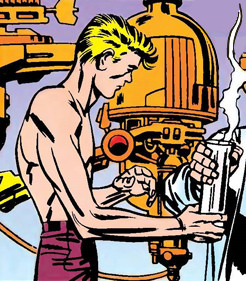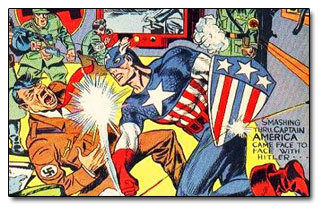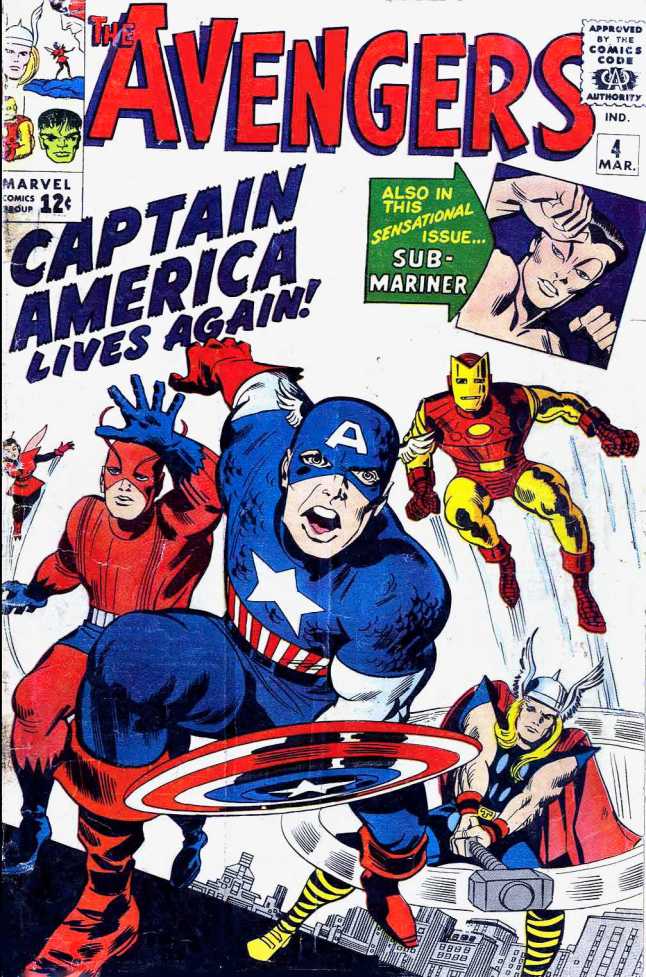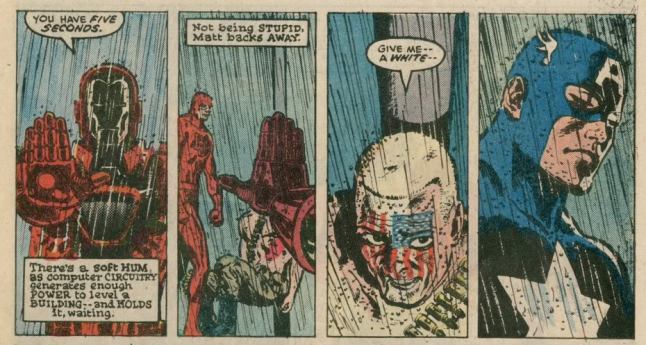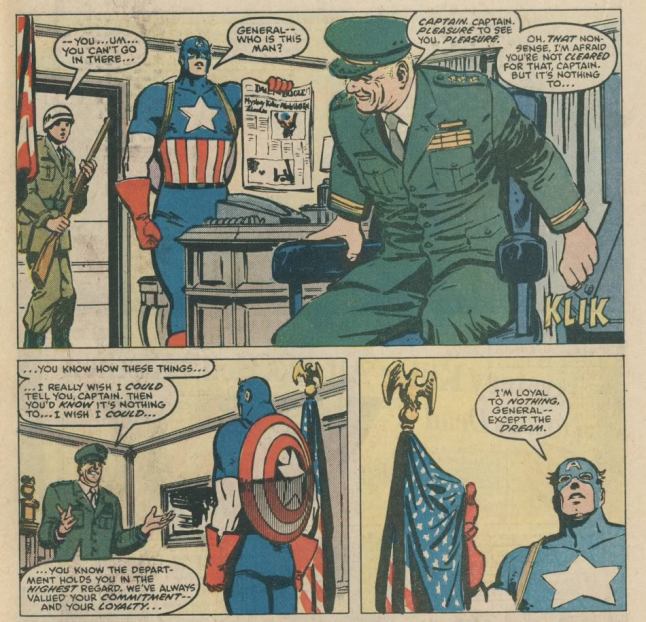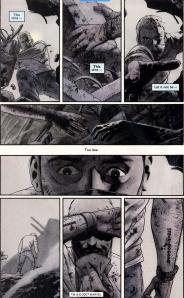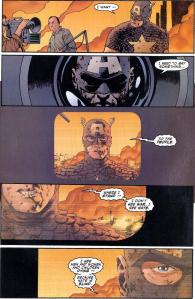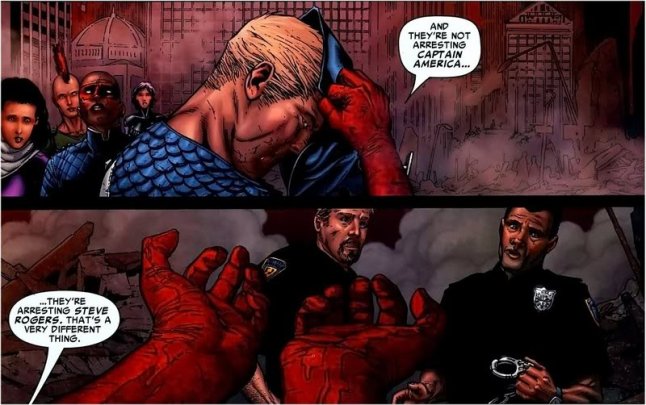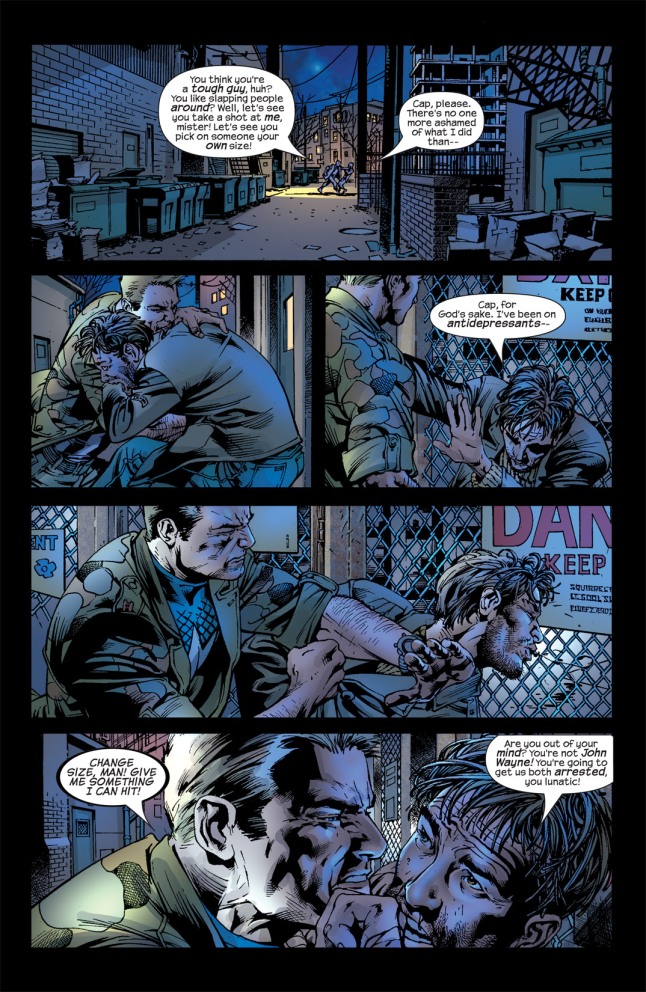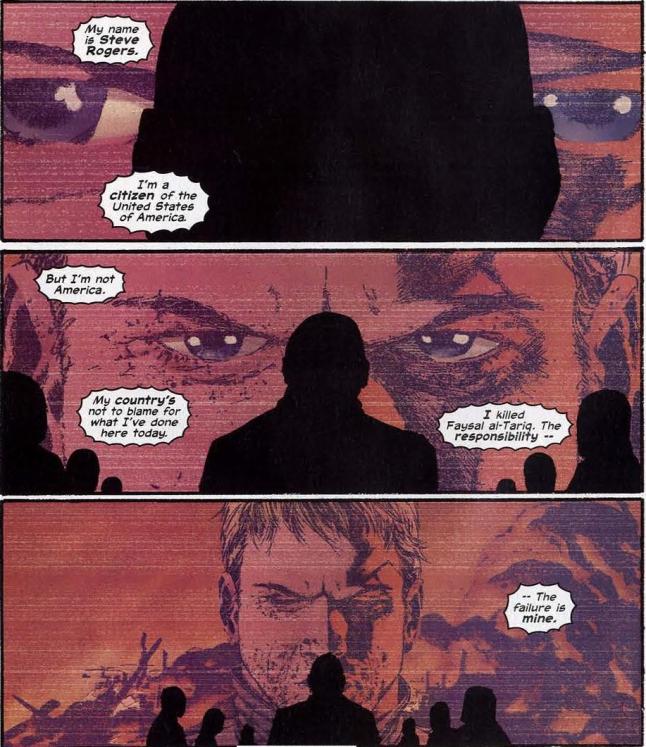In the 1940’s Steve Rogers attempts to enlist in the U.S. Army to help fight the war machine that is The Third Reich. Due to a number of physical maladies, Rogers is found unfit for military service. After observing his adamancy to help fight the Nazi’s, Steve is recruited into Operation: Rebirth. Rebirth is a military project to create super soldiers to help the Americans defeat the Axis powers. The process of turning Steve into a superman is successful and he is redubbed as Captain America! Due to the assassination of Dr. Abraham Erskine, Steve becomes the only individual to be privileged with enhanced strength. The stories that ensue are the exploits of Cap and his sidekick and best friend, James “Bucky” Barnes. In the post WWII-era, many superhero comics started to become unpopular, including Cap.
During this time, Captain America graced the silver screen in a number of war oriented serials as a means of garnering support for the Department of War. These films were chalk full of patriotism and bland action sequences that have come to be a staple of period WWII films from that age in cinema. As the war approached its end, we can see a waning interest in the superhero genre in the comics.
Eventually his title was cancelled and we wouldn’t see him again until he was brought back in 1964’s fourth issue of The Avengers. Shortly thereafter Captain America proved to be a household commodity. In the Marvel Universe, Rogers assumed the role of leader for The Avengers, as well as an example to people the world over.
Over time we saw Rogers go through many transformations beyond that of a political stooge (which he never really was). In the 70’s Rogers abandoned his star spangled persona due to disillusionment and became the superhero known as Nomad. It was a short lived phase of his life as he realized that the stars and stripes (at least for him) symbolized more than just the American dream. We see this in Daredevil issue #233 (published in August 1986, written by Frank Miller), in which Cap helps The Man Without Fear defeat a crazed supervillain known as Nuke. The battle between Nuke and Daredevil was terrible and caused a number of powerful fires throughout Hell’s Kitchen. Captain America leads The Avengers to control the fires and help innocent bystanders who had been caught in the cross fire.
We can see from Cap’s expression that he is greatly saddened at the anarchy that ensued in the battle; serving as a solid presentation of his value of human life. He didn’t just right into the fray with Nuke, he saw to the victims of collateral damage. Later, Rogers discovers that Nuke was the result of military experimentation and confronts the members of the U.S. military responsible for Nuke’s creation. When his motivations are handed to him as mere platitudes, he clearly states where he stands and what truly motivates him… Freedom.
Moving into the 90’s Captain America saw a bit of a lull and came to be what many people see him as even to this day, a stereotypical American with an overactive sense of patriotism. A government lap dog in a flashy costume. It was a period where he became that two dimensional character that had formed in the minds of his readers in the post-war era. It is also when Marvel Comics began trying to produce higher end films, the typically ended up being direct to video releases. One of these was 1990’s Captain America. While it was a valiant effort to being Steve Rogers to the movies, the film wasn’t what it could be, and really was just a watered down version of that decade’s drab action films.
To many fans of Captain America, the 2000’s would be no different from what they got in the 90’s. Then everything changed in September of 2001. In the aftermath of the 9/11 attacks, Marvel Comics found it’s self in a worrisome position. The world had greatly changed and they couldn’t show Spider-Man punching a Muslim in the face with a catchy one liner. But, unlike many of the characters of the DC Universe, Marvel made its home in New York City. So how could they address the attacks in a respectful way? In a smart move by Marvel, they acknowledge the attacks and adopted them into the mythos of the Marvel Universe. As a natural progression from this move, many people asked, “What does Captain America do when this happens?”
We got our answer in Captain America: The New Deal (Vol. 4 issues #1 – #6, written by John Ney Rieber). The story arch begins at ground zero, where Cap is helping EMS teams to find survivors. When Fury tries to issue new orders to Rogers which would place him in Afghanistan to fight terrorists, Cap refuses and remains in New York to help find survivors. Later in the same issue, Cap prevents a white man who lost a loved one in the attacks from murdering a Muslim man. He explains to the angry, would-be killer that he shouldn’t give into a close minded prejudice that would take him down a dark and hateful path. This presents an often overlooked aspect of Captain America’s inner workings.
In the volume that follows, Captain America discovers rogue elements of the American government aiding terrorists. It becomes a new era for this character as he has to truly fight the government that created him because it opposes everything he stands for.
Steve Rogers is a character who values human life and doesn’t like the prospect of killing. It is revealed that during WWII, Captain America decided he would not longer kill enemy soldiers. He would simply take them prisoner and hand them over to the appropriate authorities for judgment. During the story arc that follows The New Deal, we learn that his desire to do what is right, overrode his sense of nationalism and this greatly troubled his superiors back in the U.S., it was then decided they needed to remove the Captain from the picture, otherwise it might lead other Americans to question their leadership as well.
Yes, the U.S. Government is believed to have attempted to kill Cap and Bucky, because Steve’s conviction was not convenient. The result was that Steve fell into the Atlantic Ocean and was frozen for decades. In the years that would follow these stories, Cap continued to become even more complex as he lead one said of a superhuman civil war on U.S. soil. At this point, Ironman was moving into production, but was still a way off; its potential success an unknown. Civil War shows us another side of Captain America when he challenges a new law that would require all superhuman to reveal their identity and register with the government. Cap was opposed to the Registration Act, and even warned Tony Stark who believed that it needed to happen. The fighting that followed was intense and lead to the deaths of several characters in the Marvel Universe.
After months of fighting, Captain America sees the horror of what they’ve done. In the end, Captain America surrenders. He realizes they were fighting but couldn’t see the forest for the trees anymore. He gives up his fight for freedom for something human life. It was a reward to all of us who had read comics that featured Cap as kids. We saw that sometimes, winning isn’t what is important. It’s the lives and feelings of others that are meaningful.
Captain America again went through a period of transformation in the decade that followed. He gave up his title. Steve Rogers became a secret agent, and even ended up being a legitimate time traveler as he explored the past.
We also saw the success of Ironman and learned of the intention to make an adaptation of The Avengers. It was a certainty we would get a movie about Captain America. And we did.
Chris Evens took up the stars, strips, and shield to give us a pulpy adventure film set almost entirely during WWII. With the help of veteran director, Joe Johnston, Captain America: The First Avenger introduced to Captain America who was true to the core of the Captain America people such as myself had grown up with. He didn’t want to kill anyone, but he respected the men who were fighting to keep the world free of tyranny. We see that in the end, Steve doesn’t like bullies, and that was why he saw the need to fight.
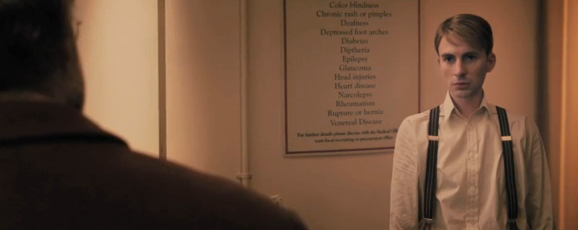
“I don’t want to kill anyone. I just don’t like bullies.” – Steve Rogers, Captain America: The First Avenger
Captain America was finally more than a boy scout. He was someone who wanted everyone to have a fair crack at life. If anyone reading this hasn’t seen the first phase of Marvel films. I’ll say nothing more about the movies other than you should see them. They really are quite good. If you haven’t read any Captain America comics, I suggest you do. Ed Brubaker has written some amazing stories.
At this juncture, I’m reminded of why my wife likes Captain America. She likes him because he is Steve Rogers. Mask or no mask, he is the same person as his heroic persona. He always tries to be a good person and do what is right. He is a truly neutral character who simply wants to help others and do good. He shows us that we can do good as well, even if it might cost us dearly.
Now, to end an up note! I thought I’d share a few of my favorite Captain America moments.
Steve Teaches Hank Pym a Lesson
This takes place in Ultimates #9, directly after Hank Pym beats his wife to a pulp and flees from the scene of the crime. While I’m not a huge fan of Mark Millar’s Captain America, I did enjoy the sequence quite a bit. It is worth mentioning that Steve told Hank to grow, simply because it wouldn’t be fair otherwise.
Captain America Takes Responsibility
This is a page from The New Deal. An excellent story arc when combined with The Extremists and is totally worth reading.
Cap Gets His Shield
Just a good ol’ 1940’s fun!
Captain America Lays Down a Plan
There are no words…. Other than the ones in this scene.
Here’s hoping for another movie and decade of Captain America comics full of honor, conviction, and conscience!
